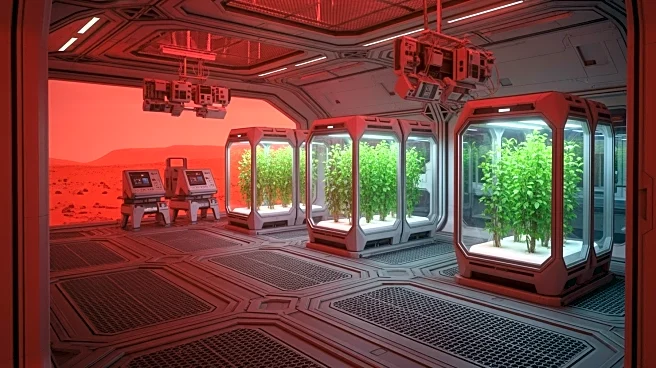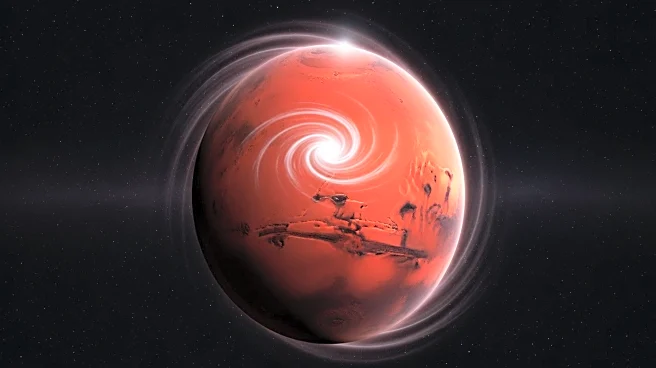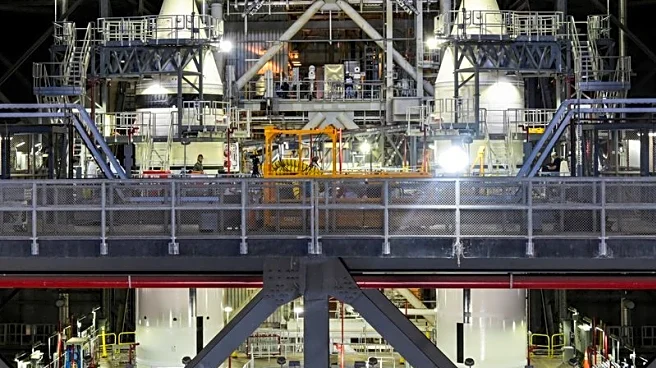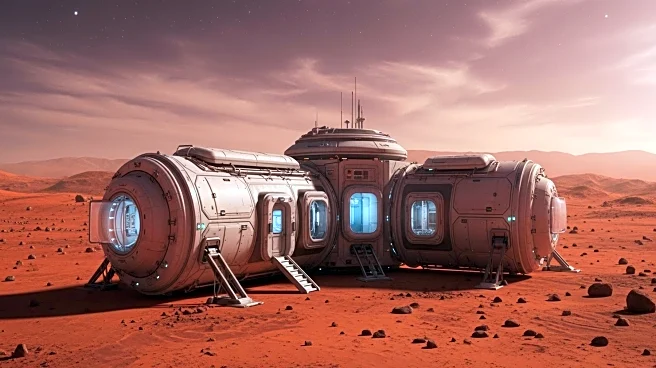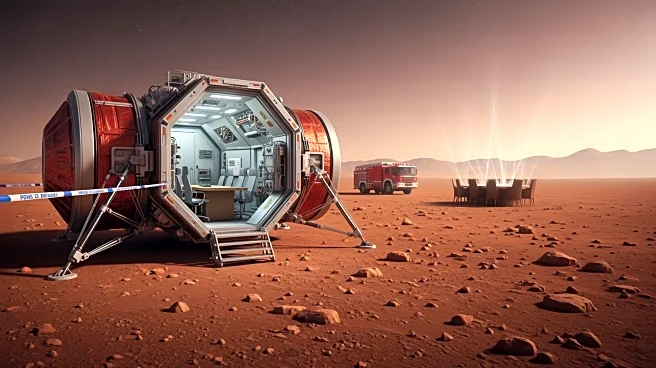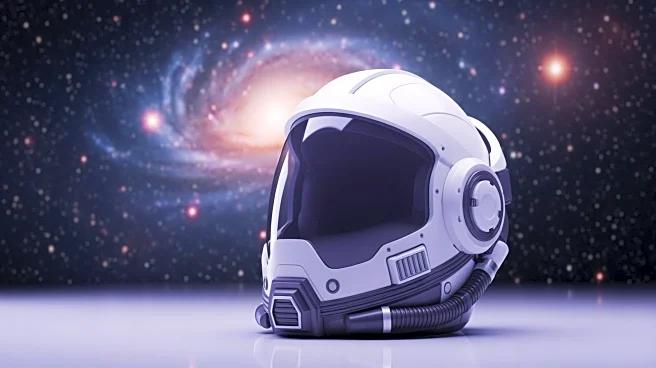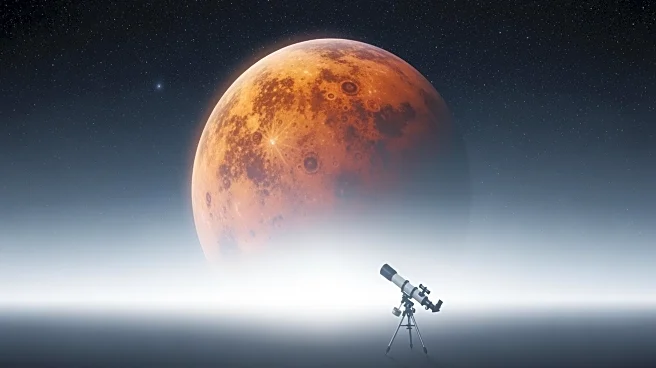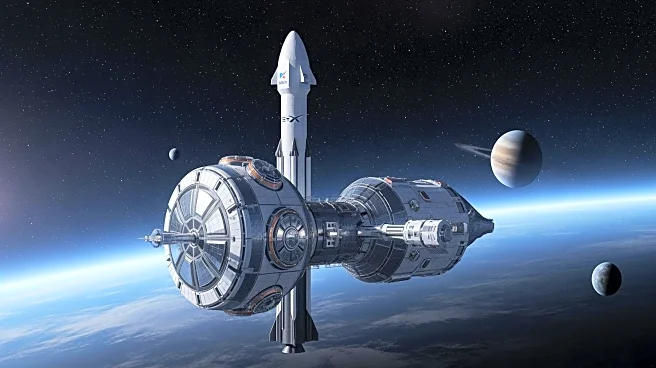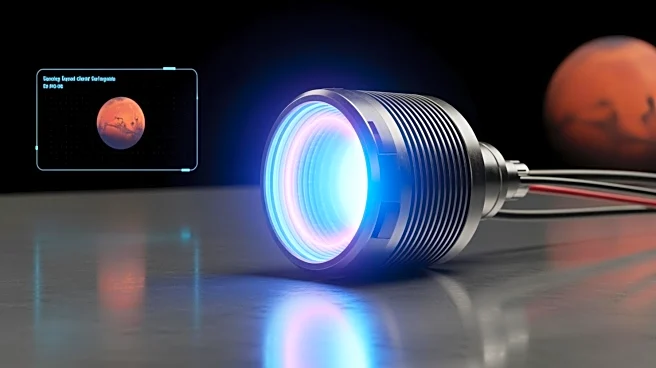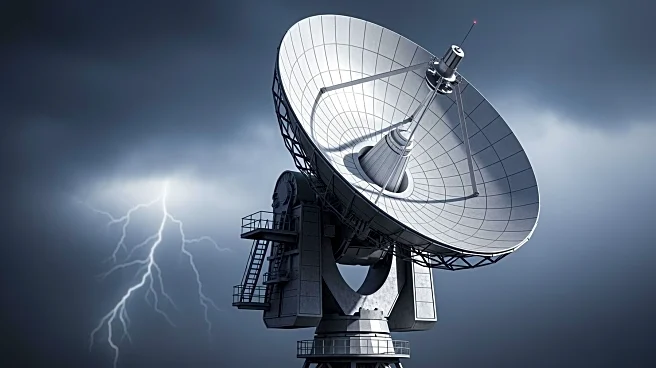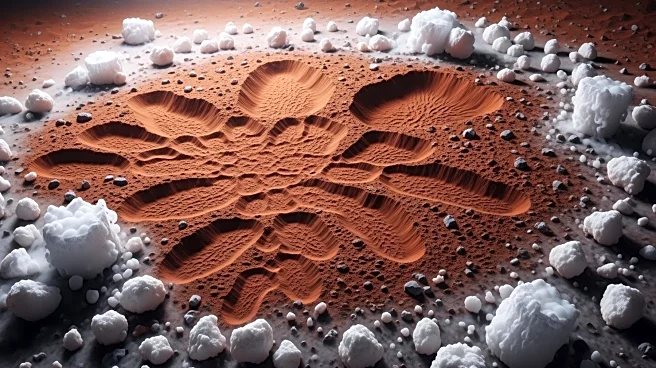What's Happening?
NASA's Chapea project, a series of Mars simulation missions, is exploring the challenges of human habitation on the Red Planet. Located at NASA's Johnson Space Center, the simulations involve crews living in isolation for extended periods to study human health
and performance in a Mars-like environment. Participants engage in tasks such as growing crops and conducting experiments, simulating conditions they might face on Mars. The project aims to prepare for future manned missions to Mars by understanding the psychological and physical demands of such a journey.
Why It's Important?
The Chapea simulations are crucial for advancing human space exploration by providing insights into the feasibility of long-term human presence on Mars. These studies help identify potential health risks and psychological challenges astronauts may face, informing the development of strategies to mitigate them. The findings could influence the design of future Mars missions and habitats, ensuring the safety and well-being of astronauts. As interest in Mars exploration grows, these simulations play a vital role in preparing for the complexities of interplanetary travel and habitation.
Beyond the Headlines
The simulations also raise ethical and logistical questions about the sustainability of human life on Mars. The harsh Martian environment poses significant challenges, including radiation exposure and limited resources, which must be addressed to ensure successful colonization. Additionally, the psychological impact of isolation and confinement highlights the need for robust support systems for astronauts. These factors underscore the importance of continued research and innovation in space technology and human factors engineering to make Mars exploration viable.
